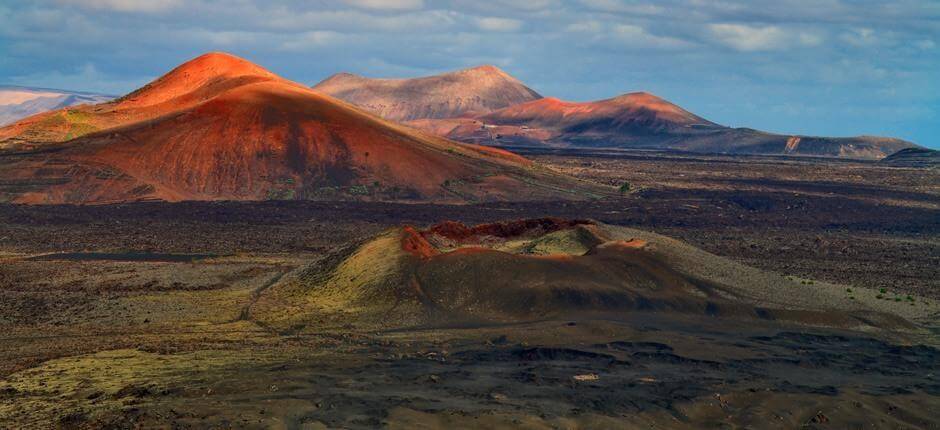

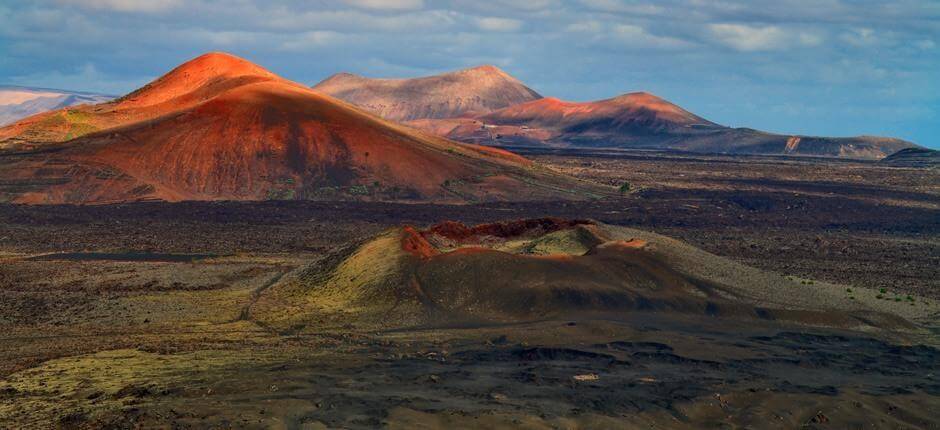
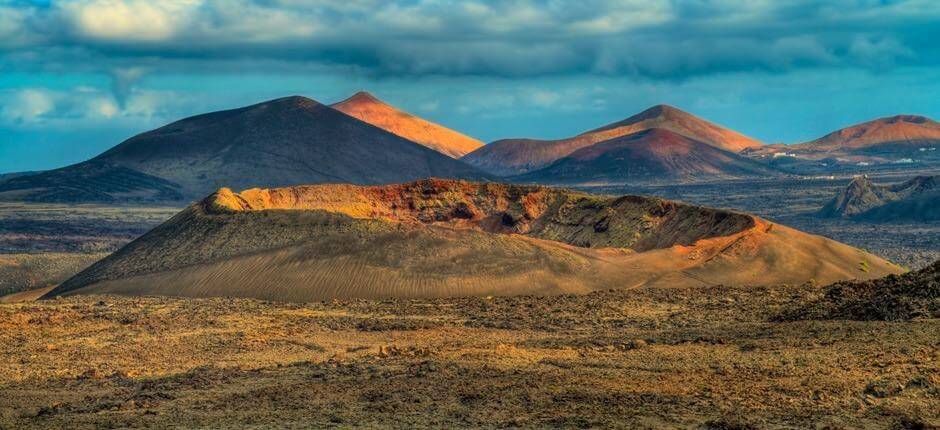

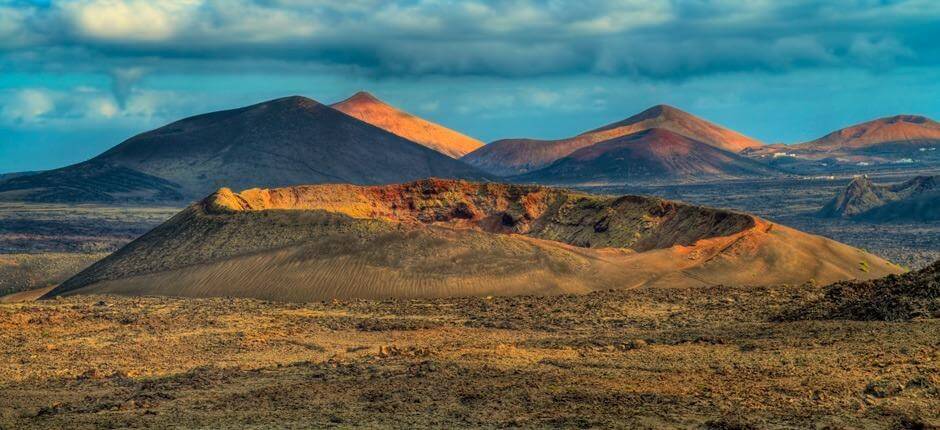
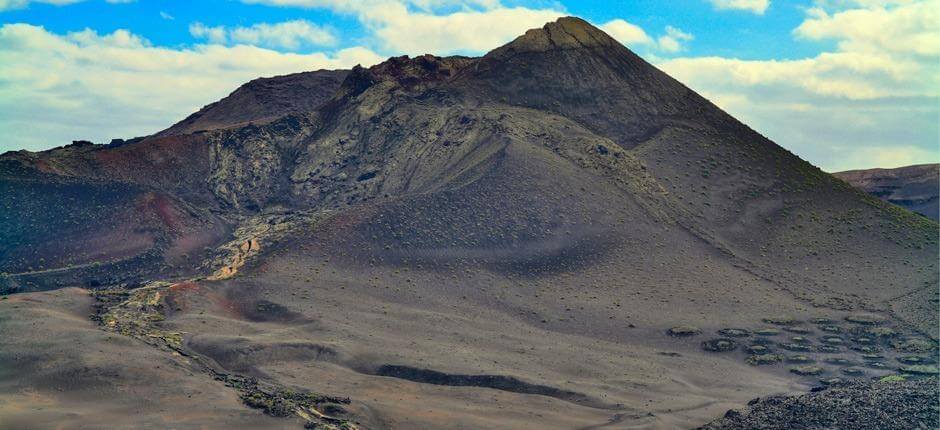

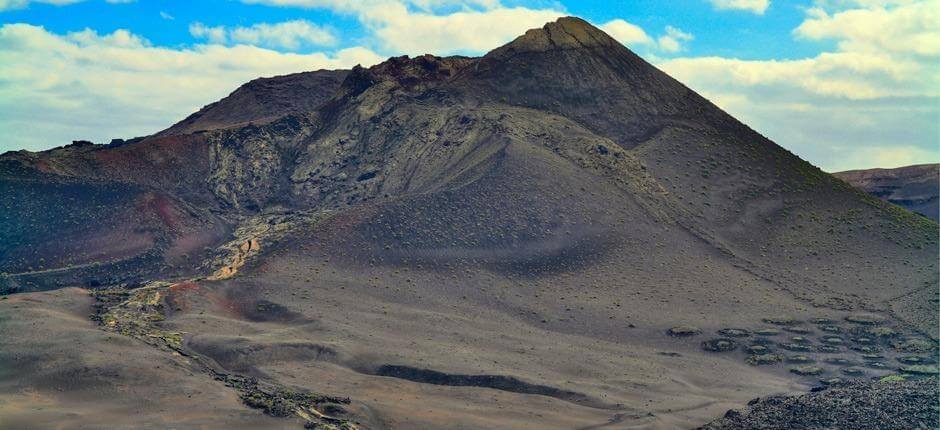
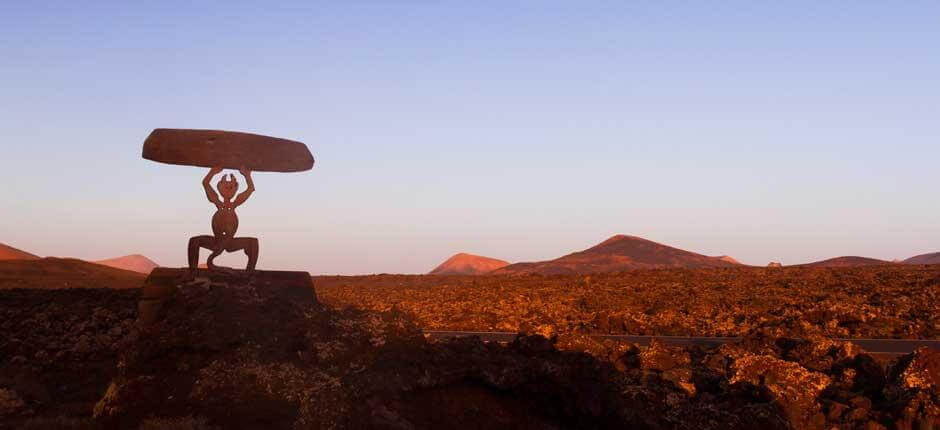

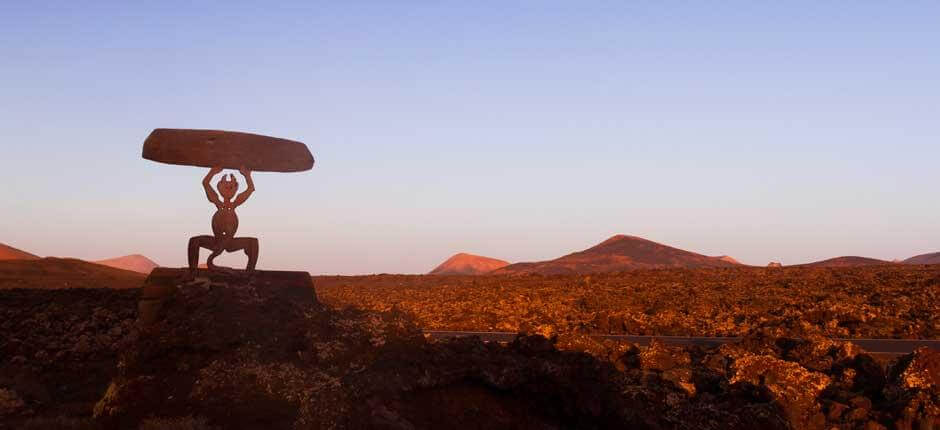
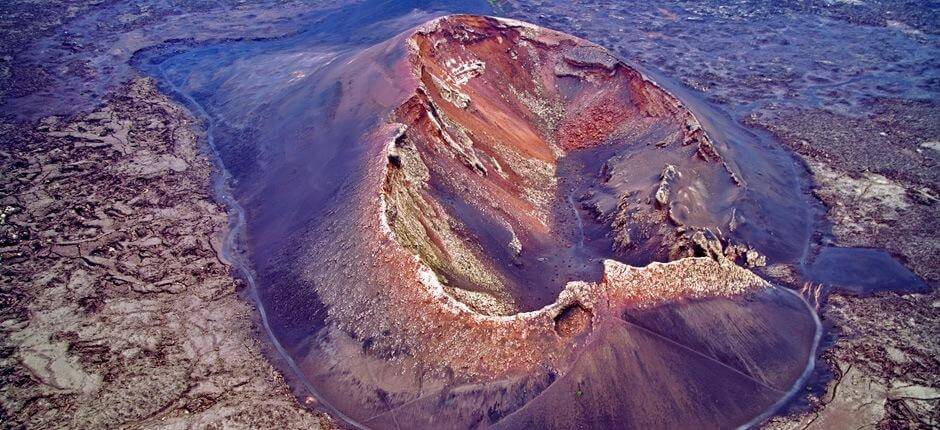

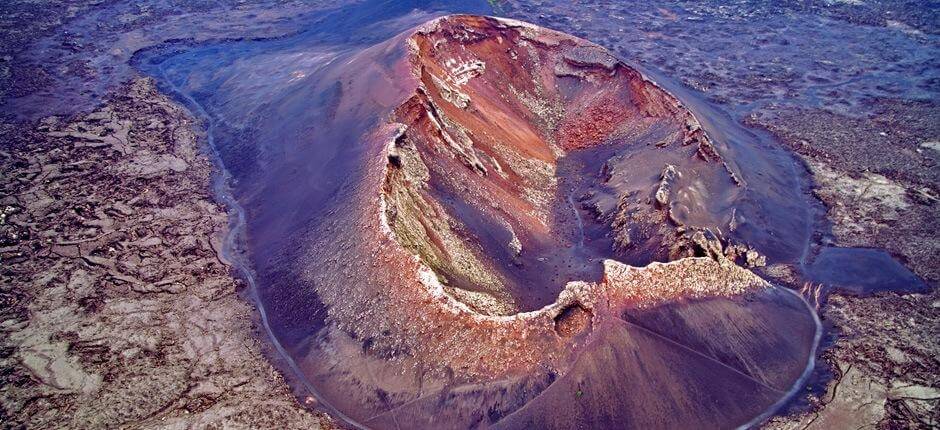
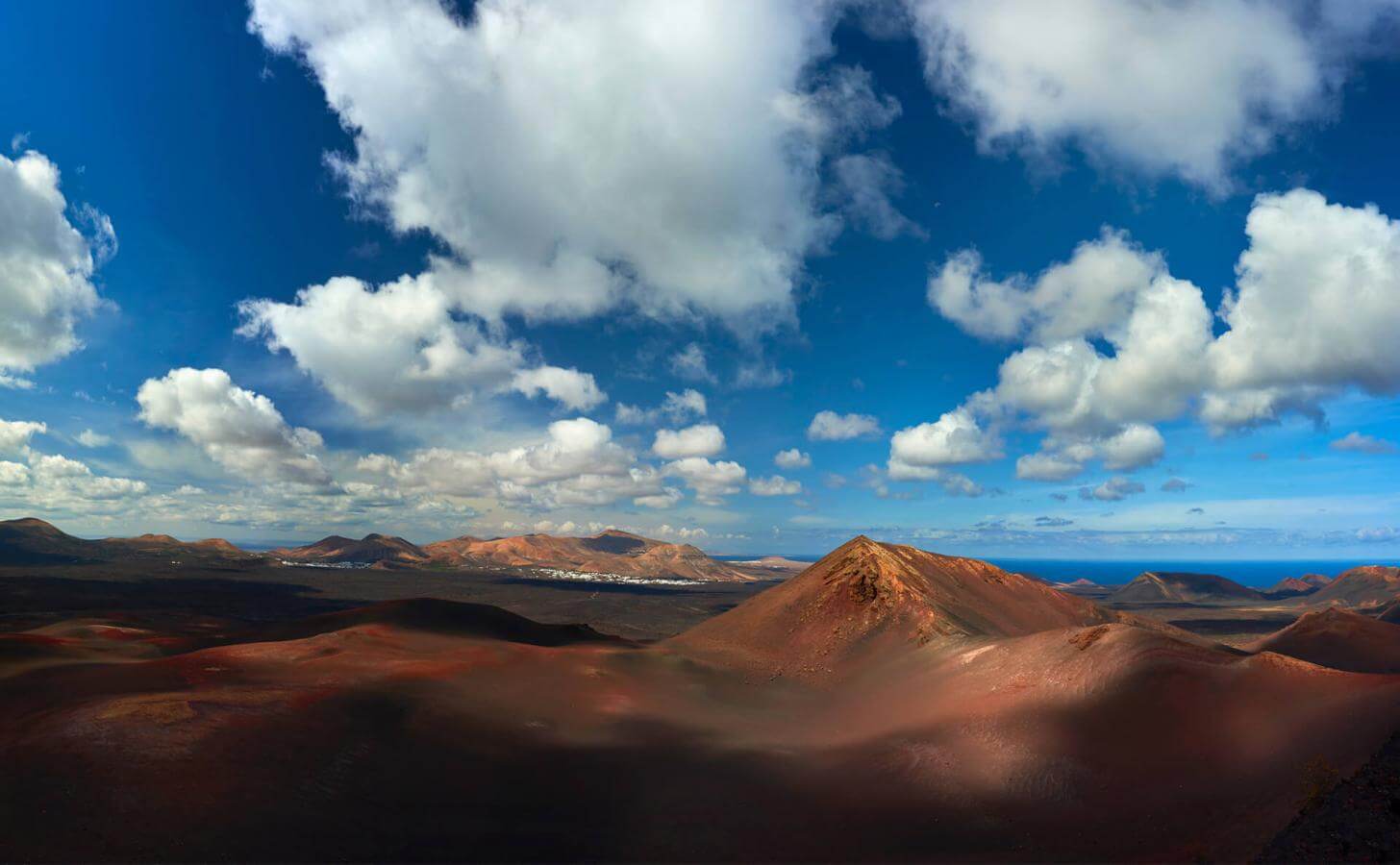

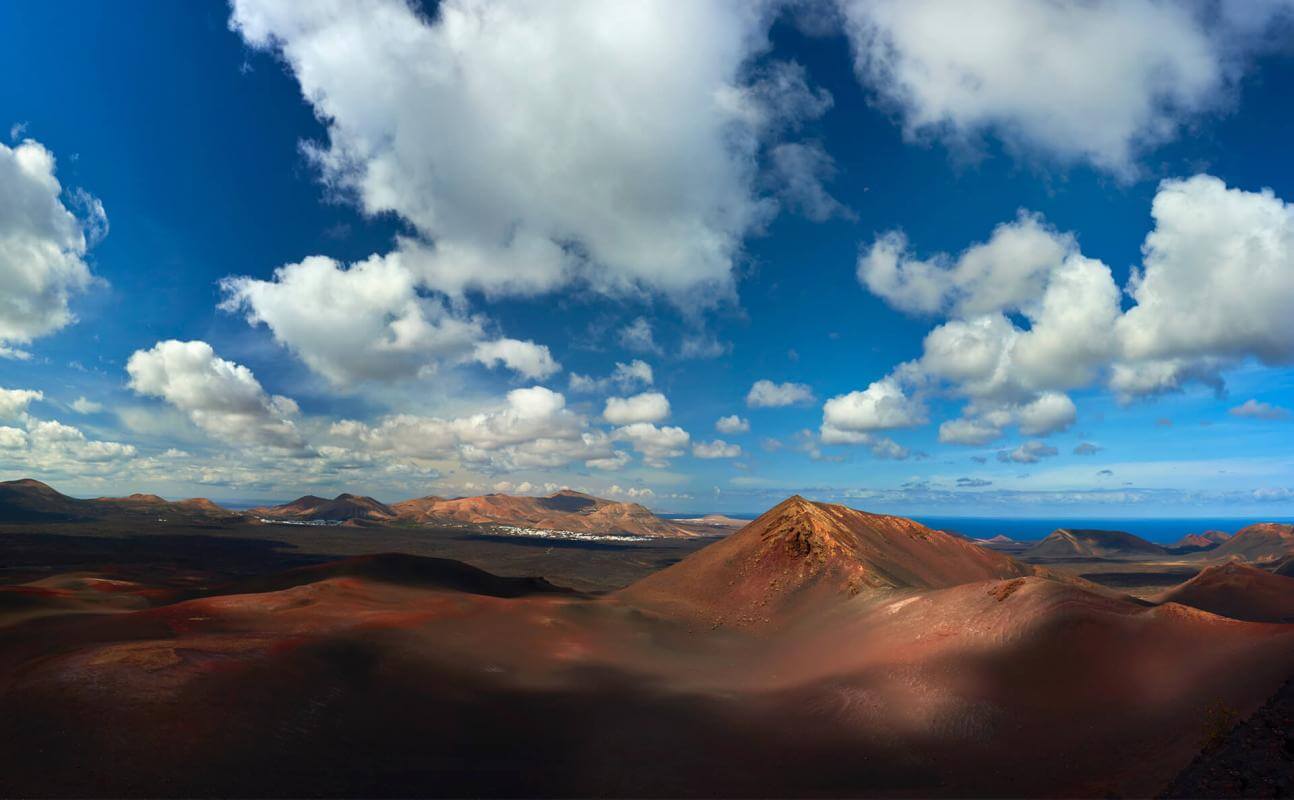
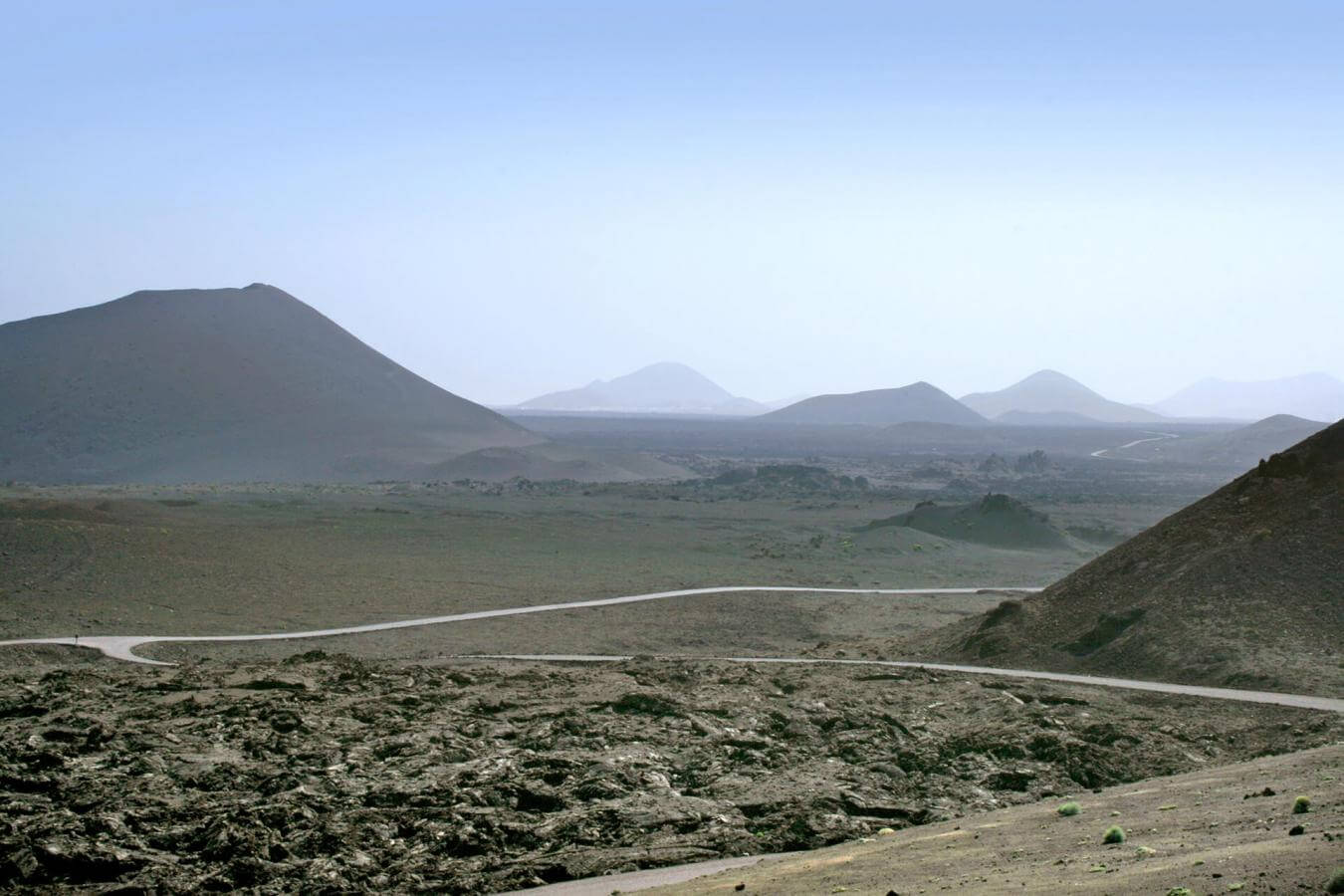

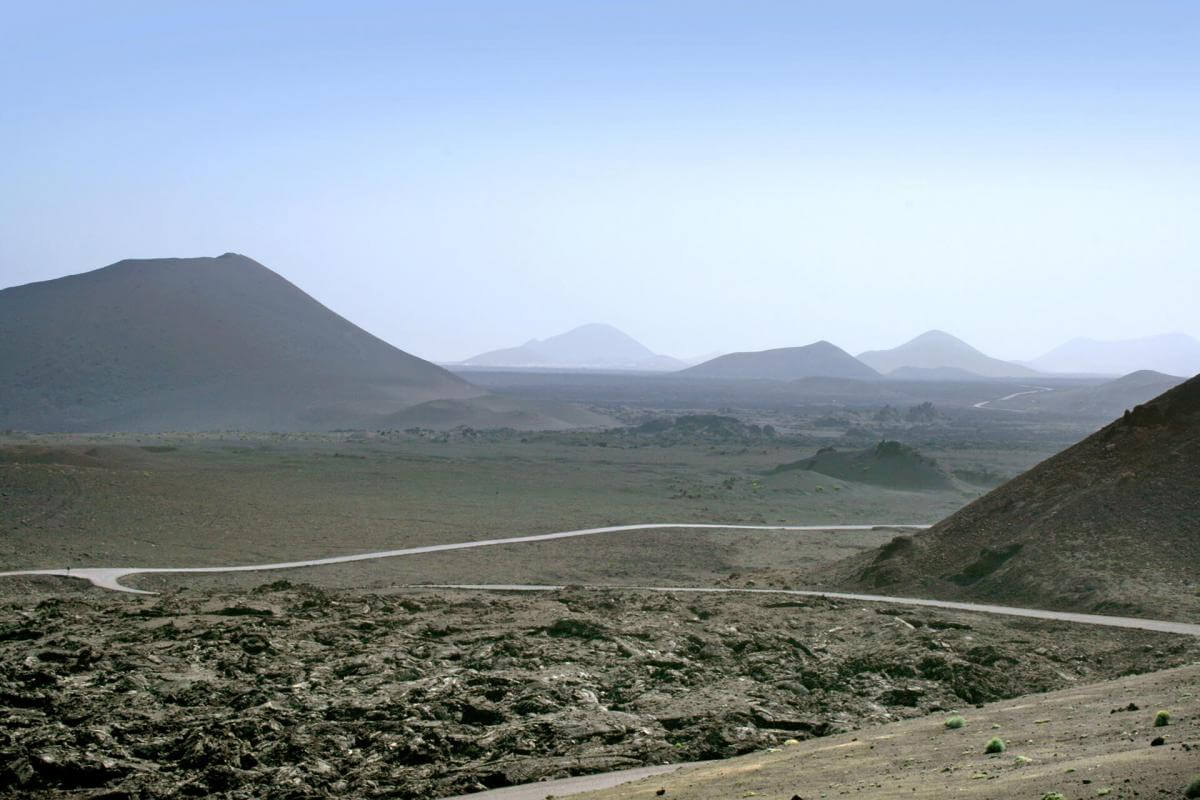
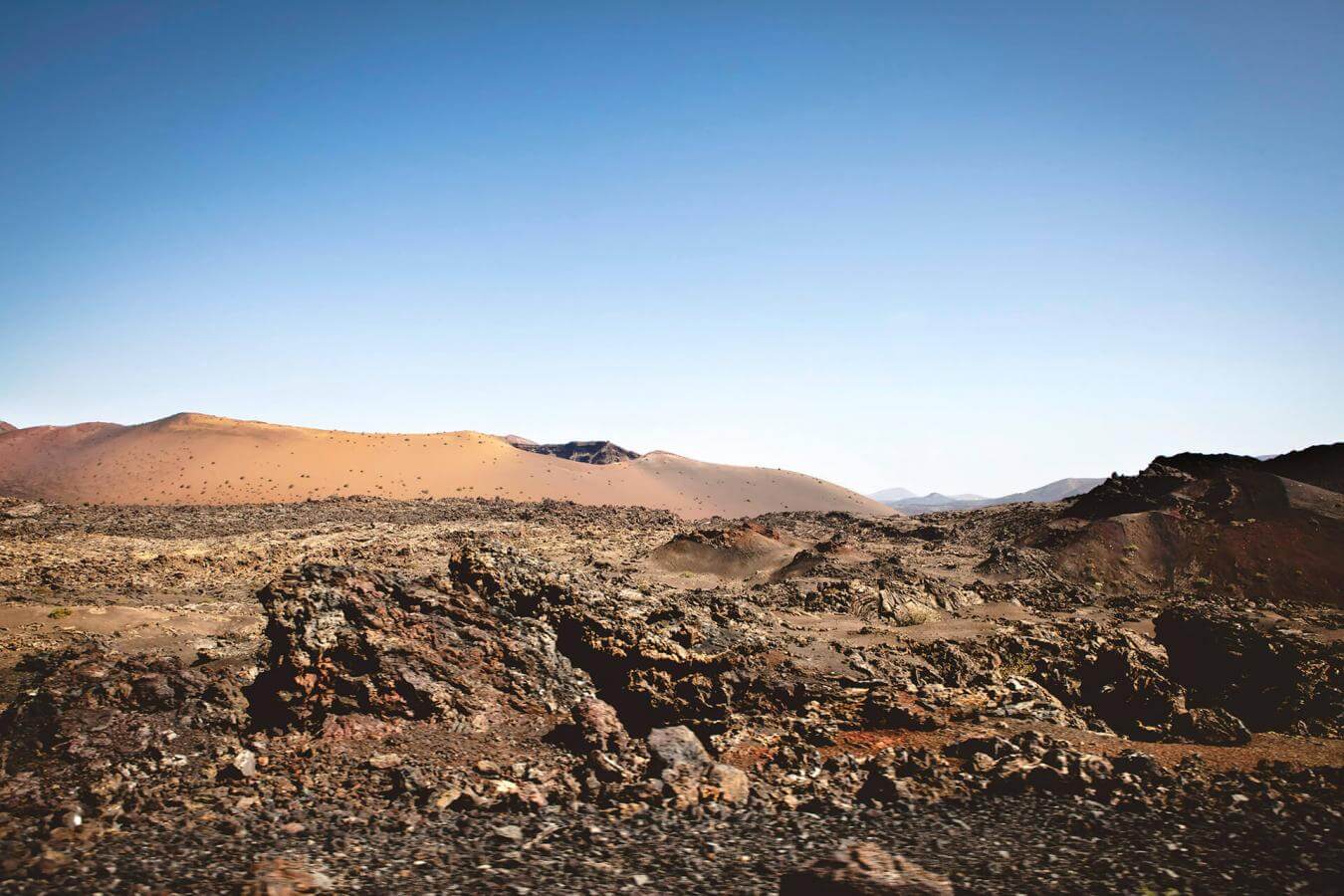

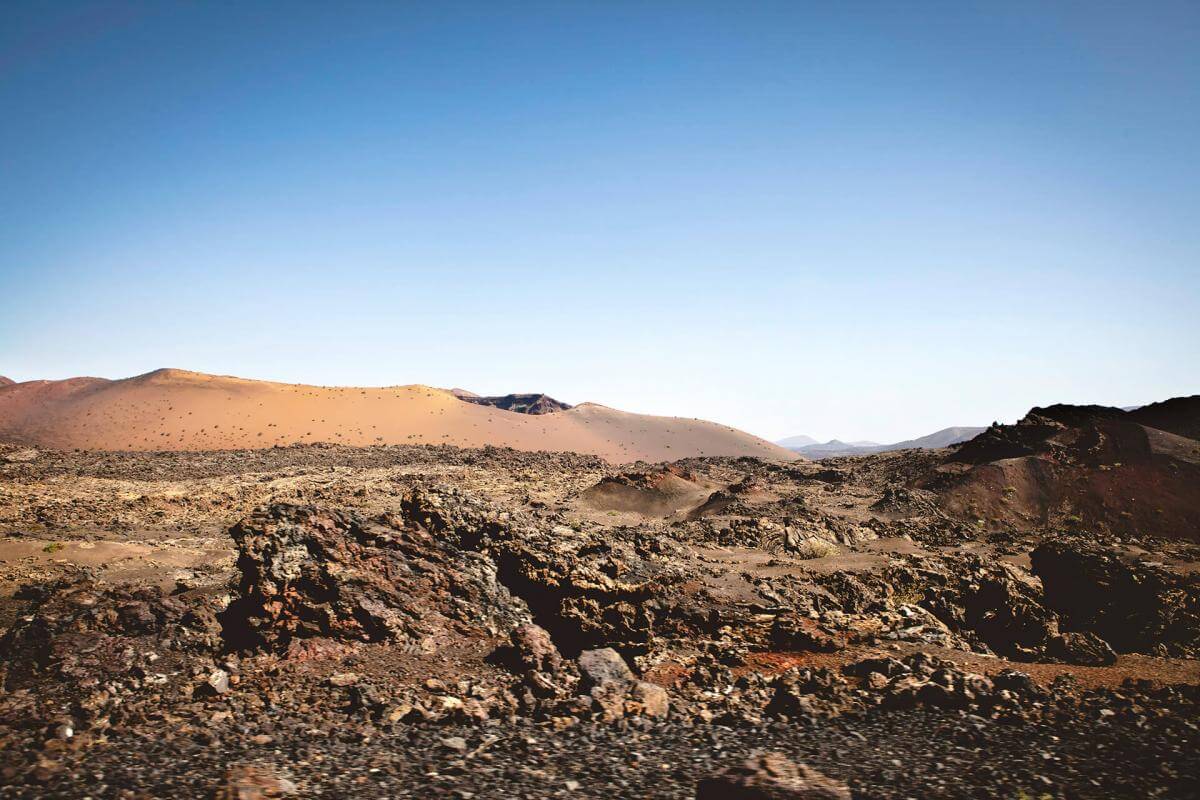
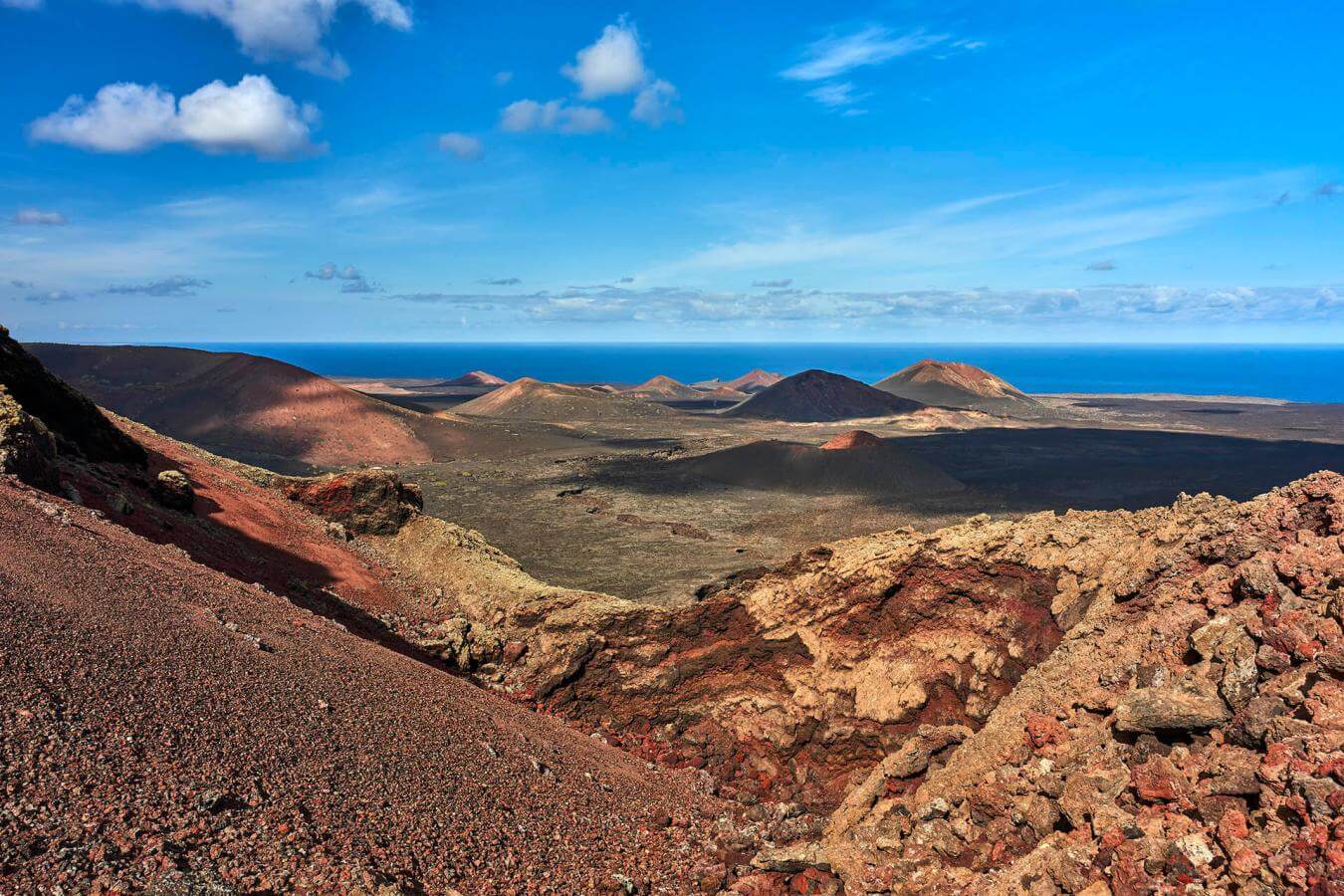

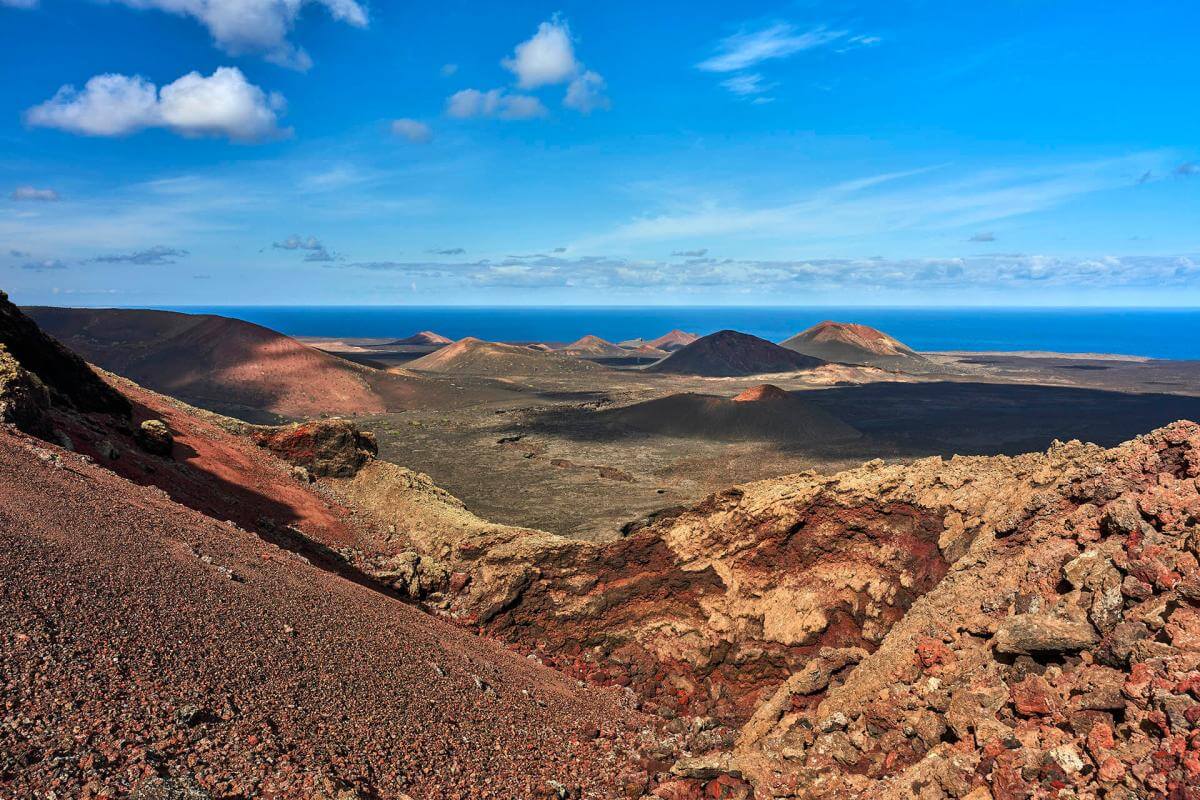
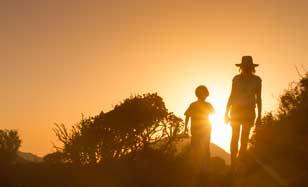
Trekking on the lava of Timanfaya
This is the most convenient route to take in order to observe more closely the beauty of the Fire Mountains in Timanfaya National Park in Lanzarote. Visitors have to go to the mound known as Islote de Hilario (Islet of Hilario) after having paid the entrance fee at the gate and then wait to get on the tour bus, which leaves the Islote itself. Once on board, the tour which lasts about 40 minutes takes you through an almost extraterrestrial landscape.
The route, which has an audio guide, takes you to the most representative places in the park; volcanic cones and tubes almost unchanged, the willful lava flows which are being colonised by lichens and red pyroclasts (fire fragments). Alternatively, you can walk through this almost unchanged landscape since its creation if you book a place on the Litoral route or the Termesana route, each route has a short version and is free of charge.
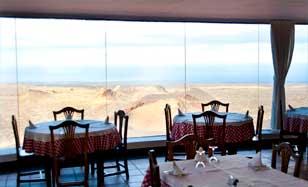
A volcanic grill house designed by César Manrique
In very few places in the world can you eat in a restaurant built around an oven-grill which uses the heat from a dormant volcano. One of them is El Diablo restaurant, situated in the Islote de Hilario(Islet of Hilario) in Timanfaya National Park. The grill in question is a deep vertical well open in the rock over which meat, fish and other local produce are cooked.
Another great attraction of this restaurant is its design, created by the Lanzarote born artist and great defender of nature, César Manrique who worked incessantly to embellish an island which today is included in the Unesco Network of Biosphere Reserves. The restaurant’s picture windows treat you to spectacular views of the Fire Mountains and of the demonstrations of artificial geysers and natural grills in the Islet de Hilario.
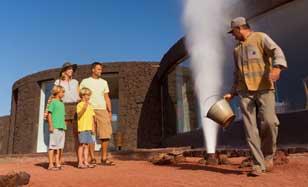
See artificial geysers in Lanzarote
The Islet of Hilario is at the tourist heart of the National Park of Timanfaya and the ideal place to see why its volcanoes are called the “Fire Mountains”. This mound is a focal point of heat release from the dormant volcanoes of Timanfaya. In some parts of the surface the temperature can reach 100 degrees centigrade. The park’s staff demonstrate this geothermal fault through artificial geysers and natural grills.
This low hill can be reached from a point on the LZ-67 road, where you see one of the symbols of the park: the metal sculpture known as The Devil of Timanfaya. The fee paid at the entrance gate includes access to the islet and the ticket for the Volcano Route bus ride. Inside the complex is El Diablo Restaurant (The Devil’s Restauant), designed, like the metallic devil, by the great Lanzarote born artist, César Manrique and whose grill uses the heat from the volcano.
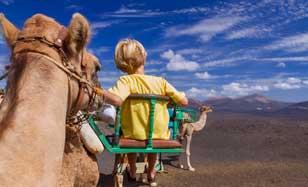
A camel ride through the Timanfaya Fire Mountains
An exotic alternative to visiting Timanfaya National Park on foot or by bus is on a camel’s back. This trip, on payment, begins at the Echadero de Cabellos (Camel Farm) an area situated alongside the LZ-67 road on the eastern border of the park. The camel ride leaves from this spot and goes along the southern face of the spectacular Timanfaya mountain. Each camel takes two people on board on a tour that lasts about 20 minutes.
The ride gives you the chance to get to know these friendly animals, which have adapted to the drought and have close ties with the recent history of Lanzarote. Once you have got used to the gentle swaying, you will begin to discover the geological marvels dotted along the route, like the brightly coloured volcanic cones, seas of rough lava and slopes of fine volcanic ash. To learn more about camels and the excursions, you should visit the small museum in the camel farm.
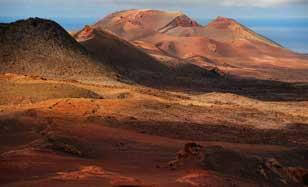
The history of volcanoes in Lanzarote
The eruptions which brought about the National Park of Timanfaya, those which changed the island of Lanzarote forever, happened nearly 300 years ago, between 1730 and 1736. For those six years, an endless series of volcanoes shook the earth, spitting out lava and pieces of incandescent rock. The longest most important eruptions in the Canary Islands are known about, thanks to the detailed descriptions of improvised chroniclers like the parish priest of Yaiza.
The violent activity of the volcanoes created new landscapes but it also ruined the way of life of some villages in Lanzarote. In 1736, many local people set off on a pilgrimage to erect a cross to ask the Virgin Mary to stop the river of lava which was threatening the village of Tinajo. The hot lava stopped just before the cross and the joyous worshippers promised to erect a shrine to the Virgin of the Volcanoes, a new Marian advocation.
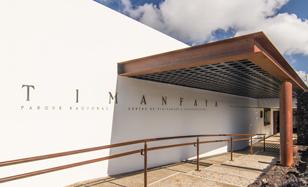
Experience a volcanic eruption in Timanfaya
The modern, accessible facilities in this interpretive centre, together with the excellent ways of presenting the principles of the National Park make it an interesting stopping point for every visitor. It is situated outside the park, on the LZ-67 road, before reaching El Taro (stone hut) and a few kilometres from the village of Tinajo. Entry is free of charge.
The audiovisual presentation given in the centre sums up, in 30 minutes, the dramatic events which shook the island of Lanzarote for a period of six years in the XVIII century, transforming it completely, and turning it into the treasure that today’s inhabitants know as the Fire Mountains. In fact, a part of the presentation called La Cueva,(The Cave) is dedicated to reproducing how it felt to experience an event of such magnitude.
- Never leave waste of any type lying around, including cigarette butts. Leftover food leads to a proliferation of rats and wild cats, which pose a serious threat to the fauna.
- Respect the animals. Do not bother them or feed them. If you see an injured specimen, you can call the emergency number: 112. Do not pick flowers or plants.
- Do not pick up or take away stones or any other item from the natural environment. And do not move them to pile them up into sadly famous 'towers'.
- Do not walk in areas where it is not allowed and respect the signposting along trails. Leaving the set paths causes damage to the environment and could also be dangerous for you and anyone with you.
- Do not light fires outside the permitted areas and be especially careful during the summer months.
- Try not to alter the peace of the environment with excessive noise (loud music, yelling, etc.).


